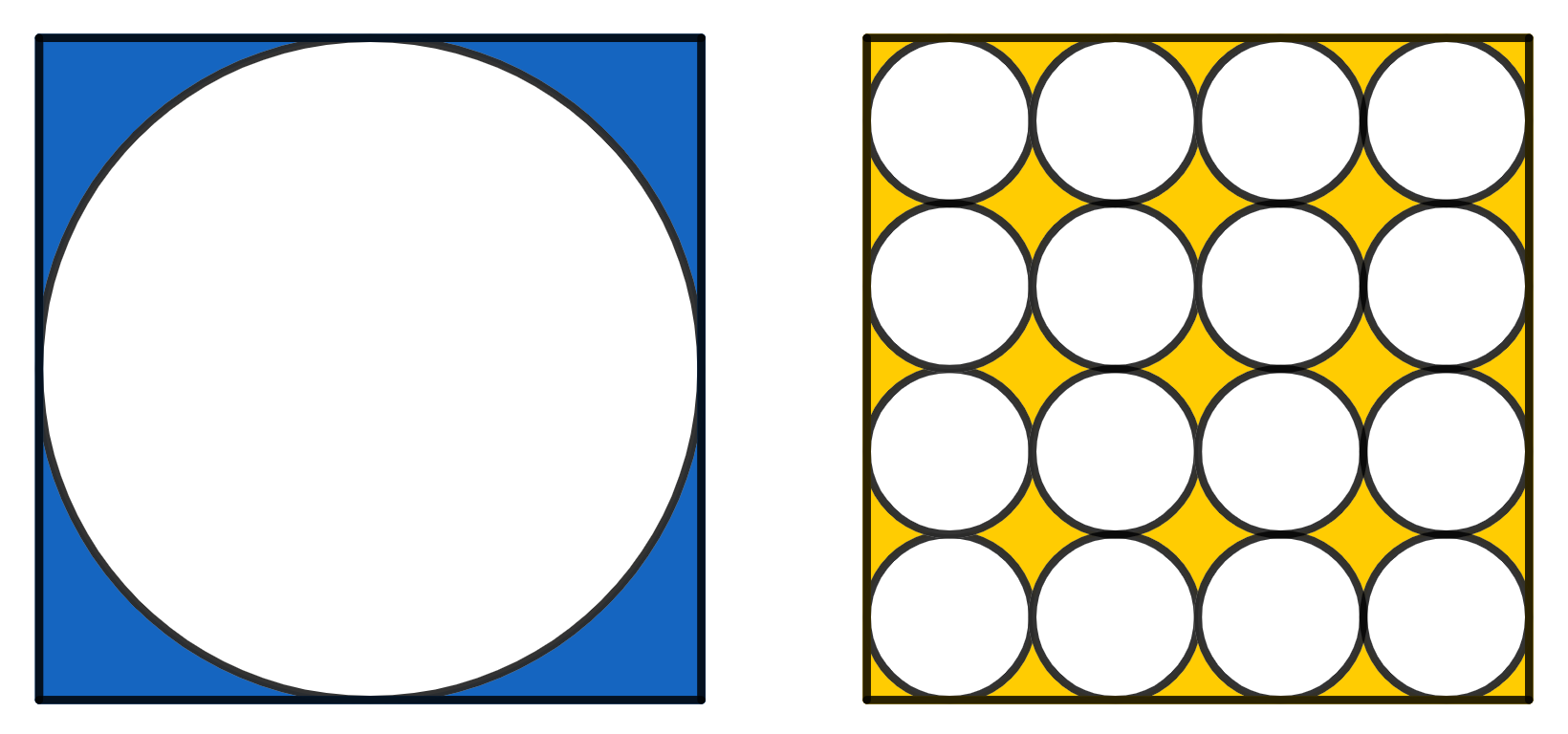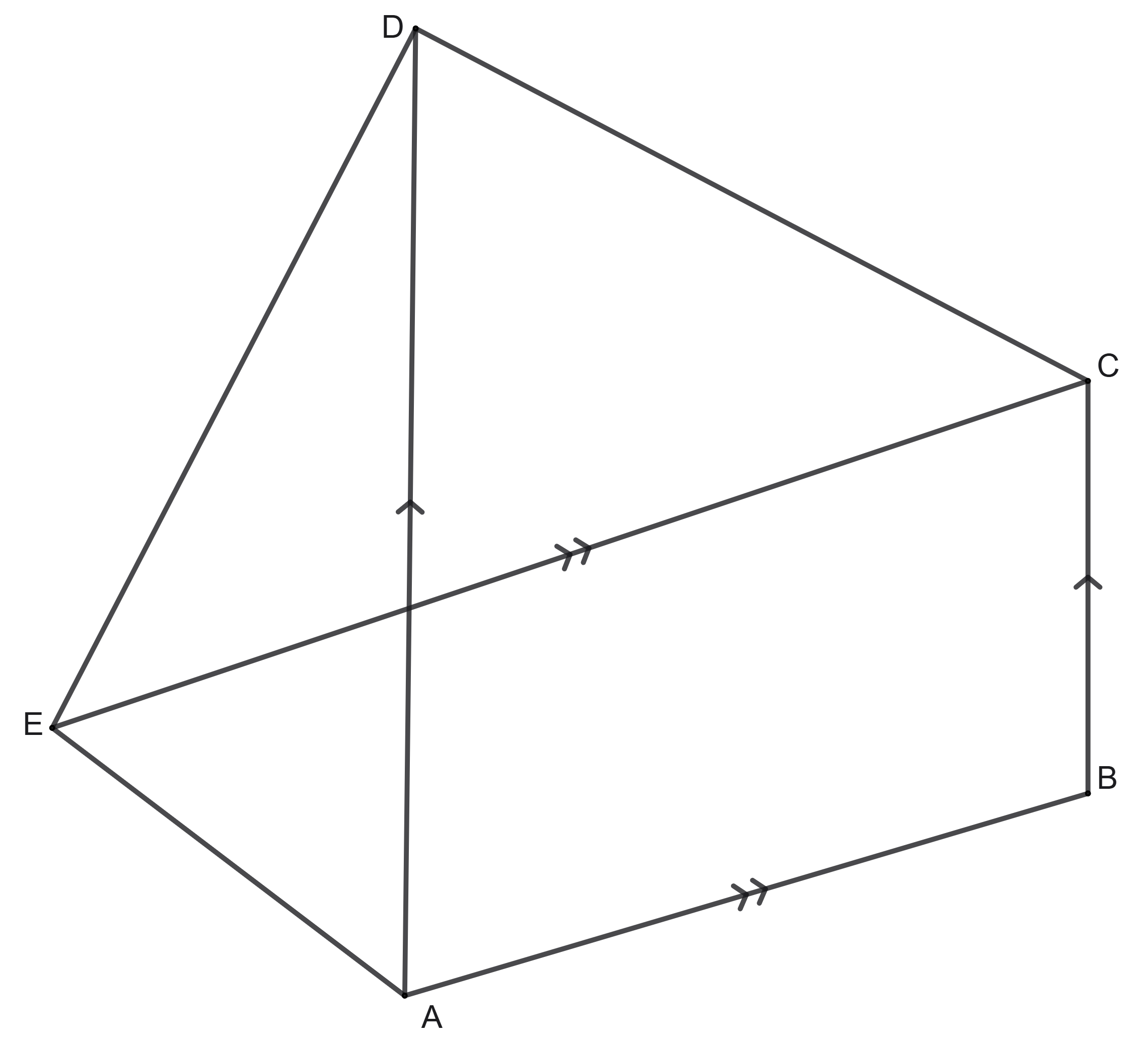Problems
A quadrilateral is given; \(A\), \(B\), \(C\), \(D\) are the successive midpoints of its sides, \(P\) and \(Q\) are the midpoints of its diagonals. Prove that the triangle \(BCP\) is equal to the triangle \(ADQ\).
On the left there is a circle inscribed in a square of side 1. On the right there are 16 smaller, identical circles, which all together fit inside a square of side 1. Which area is greater, the yellow or the blue one?

In a pentagon \(ABCDE\), diagonal \(AD\) is parallel to the side \(BC\) and the diagonal \(CE\) is parallel to the side \(AB\). Show that the areas of the triangles \(\triangle ABE\) and \(\triangle BCD\) are the same.

120 unit squares are placed inside a \(20 \times 25\) rectangle. Prove that it will always be possible to place a circle with diameter 1 inside the rectangle, without it overlapping with any of the unit squares.
You are given \(7\) straight lines on a plane, no two of which are parallel. Prove that there will be two lines such that the angle between them is less than \(26^{\circ}\).
On a circle of radius 1, the point \(O\) is marked and from this point, to the right, a notch is marked using a compass of radius \(l\). From the obtained notch \(O_1\), a new notch is marked, in the same direction with the same radius and this is process is repeated 1968 times. After this, the circle is cut at all 1968 notches, and we get 1968 arcs. How many different lengths of arcs can this result in?
It is known that a camera located at \(O\) cannot see the objects \(A\) and \(B\), where the angle \(AOB\) is greater than \(179^\circ\). 1000 such cameras are placed in a Cartesian plane. All of the cameras simultaneously take a picture. Prove that there will be a picture taken in which no more than 998 cameras are visible.
Prove that for every convex polyhedron there are two faces with the same number of sides.
A spherical sun is observed to have a finite number of circular sunspots, each of which covers less than half of the sun’s surface. These sunspots are said to be enclosed, that is no two sunspots can touch, and they do not overlap with one another. Prove that the sun will have two diametrically opposite points that are not covered by sunspots.
In a regular 1981-gon 64 vertices were marked. Prove that there exists a trapezium with vertices at the marked points.